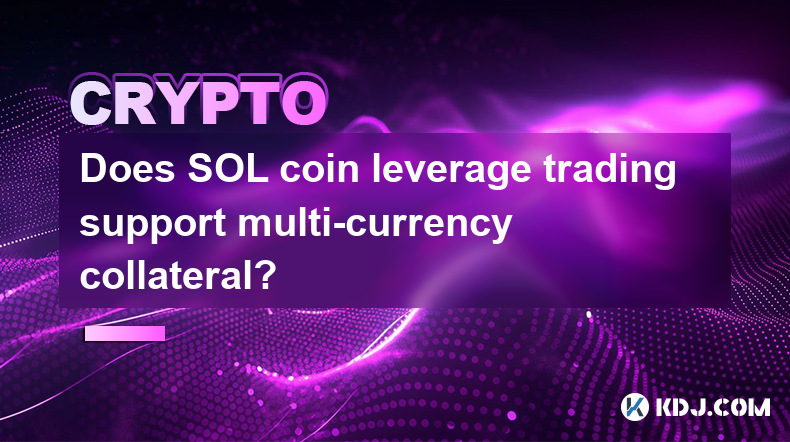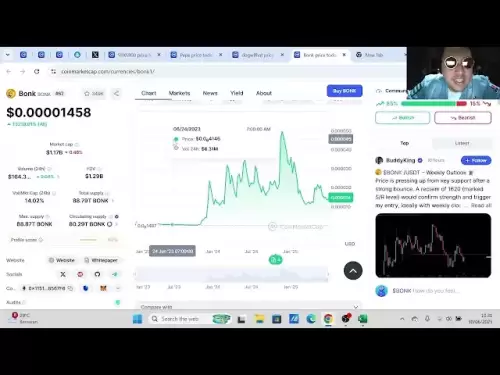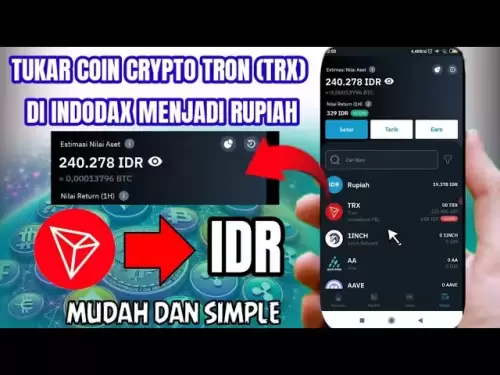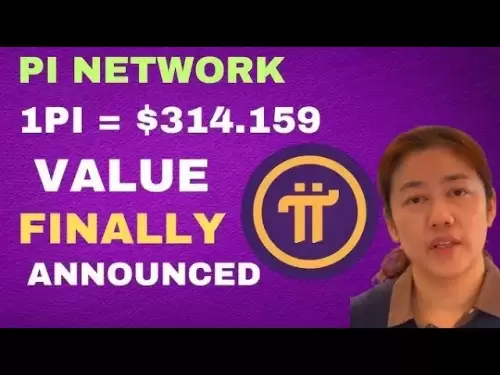-
 Bitcoin
Bitcoin $108,489.6704
1.13% -
 Ethereum
Ethereum $2,502.0528
2.92% -
 Tether USDt
Tether USDt $1.0002
0.00% -
 XRP
XRP $2.1941
0.51% -
 BNB
BNB $655.3375
1.00% -
 Solana
Solana $151.5977
1.27% -
 USDC
USDC $0.9999
0.00% -
 TRON
TRON $0.2768
0.32% -
 Dogecoin
Dogecoin $0.1676
2.86% -
 Cardano
Cardano $0.5675
0.98% -
 Hyperliquid
Hyperliquid $40.6109
7.48% -
 Bitcoin Cash
Bitcoin Cash $500.7746
2.09% -
 Sui
Sui $2.8328
2.03% -
 Chainlink
Chainlink $13.4452
1.26% -
 UNUS SED LEO
UNUS SED LEO $9.1623
0.39% -
 Avalanche
Avalanche $18.2267
2.24% -
 Stellar
Stellar $0.2382
0.00% -
 Toncoin
Toncoin $2.8885
1.68% -
 Shiba Inu
Shiba Inu $0.0...01159
0.91% -
 Litecoin
Litecoin $87.1827
0.88% -
 Hedera
Hedera $0.1511
2.90% -
 Monero
Monero $315.4992
-0.59% -
 Polkadot
Polkadot $3.4663
2.34% -
 Bitget Token
Bitget Token $4.6118
-0.65% -
 Dai
Dai $1.0000
-0.01% -
 Ethena USDe
Ethena USDe $1.0003
0.02% -
 Uniswap
Uniswap $7.2989
4.69% -
 Pepe
Pepe $0.0...01003
5.73% -
 Aave
Aave $275.5616
7.15% -
 Pi
Pi $0.5181
-2.49%
Does SOL coin leverage trading support multi-currency collateral?
Most Solana (SOL) leverage trading platforms only accept SOL as collateral, avoiding complexities of multi-currency valuation and risk management, though this limits options and doesn't eliminate inherent leverage risks.
Mar 13, 2025 at 03:00 pm

Key Points:
- Solana (SOL) leverage trading platforms generally do not support multi-currency collateral directly.
- Most platforms restrict collateral to SOL itself for leveraged trading of SOL.
- Using a different cryptocurrency as collateral would require complex intermediary steps and likely higher fees.
- The lack of multi-currency collateral is a common limitation across many cryptocurrency exchanges and trading platforms, not just for SOL.
- Understanding the risks associated with leverage trading, regardless of collateral type, is crucial.
Does SOL Coin Leverage Trading Support Multi-Currency Collateral?
The short answer is largely no. While many centralized exchanges offer leverage trading for SOL, the vast majority only allow the use of SOL itself as collateral. This means to open a leveraged position in SOL, you must deposit SOL as your margin. You cannot, for example, use Bitcoin (BTC), Ethereum (ETH), or another altcoin to secure your leveraged SOL trade.
This limitation stems from several factors. First, pricing and valuation are simpler when using the same asset as both the trading instrument and the collateral. Calculating liquidation prices and managing risk becomes significantly more complex when multiple, volatile cryptocurrencies are involved.
Second, the mechanics of implementing multi-currency collateral would require sophisticated cross-chain functionality and complex risk management systems. These systems are not yet commonplace on most cryptocurrency exchanges offering SOL leverage trading. The development and maintenance of such systems would add considerable cost and complexity.
Third, regulatory compliance plays a role. Different jurisdictions have different regulations regarding margin trading and the types of assets that can be used as collateral. Supporting multi-currency collateral might create compliance challenges for exchanges operating in multiple regions.
Let's examine how a typical SOL leverage trading platform operates. You would first need to deposit SOL into your trading account. The platform would then allow you to open a leveraged long or short position, specifying the leverage multiple (e.g., 2x, 5x, 10x). Your deposited SOL acts as collateral to cover potential losses. If the market moves against your position and your losses exceed the value of your collateral, your position will be liquidated.
Exploring Workarounds (with significant caveats):
While direct multi-currency collateral is generally unavailable, some indirect approaches might be considered, although they involve additional steps and risks. These are not recommended for novice traders.
- Trading on multiple exchanges: You could potentially use one exchange to trade SOL with SOL collateral and another exchange to trade other cryptocurrencies to manage your risk. This adds complexity and increases transaction costs. It also introduces the risk of timing mismatches and potential losses from arbitrage opportunities.
- Using DeFi protocols (extremely risky): Some decentralized finance (DeFi) platforms might offer more flexible collateral options. However, DeFi is significantly riskier than centralized exchanges due to the higher potential for smart contract vulnerabilities, exploits, and lack of regulatory oversight. Using DeFi for leverage trading requires a deep understanding of smart contracts and risk management in decentralized environments. This is highly advanced and not suitable for most users.
Common Questions:
Q: Why don't more platforms support multi-currency collateral for SOL leverage trading?
A: Primarily due to the increased complexity in risk management, valuation, and regulatory compliance. It's a significant technical and logistical undertaking.
Q: Are there any risks associated with SOL leverage trading, even with SOL collateral?
A: Yes, significant risks exist. Leverage magnifies both profits and losses. A small adverse price movement can quickly lead to liquidation and substantial losses, even if using only SOL as collateral.
Q: Is it safer to use SOL as collateral compared to other cryptocurrencies for SOL leverage trading?
A: From a simplification of risk management perspective, yes, using SOL as collateral for SOL trading is simpler and arguably less risky than introducing multiple volatile assets. However, the inherent risks of leverage trading remain regardless of collateral type.
Q: What are the typical fees involved in SOL leverage trading?
A: Fees vary across platforms, but typically include trading fees (maker/taker fees), funding fees (for perpetual contracts), and potentially liquidation fees if your position is liquidated.
Q: Where can I find more information about SOL leverage trading platforms?
A: You can research various centralized cryptocurrency exchanges that offer SOL trading. Always carefully review their terms and conditions, fees, and risk disclosures before engaging in leverage trading. Remember that leverage trading is inherently risky.
Q: How does liquidation work in SOL leverage trading?
A: If your position's losses exceed your collateral (SOL), the platform will automatically liquidate your position to minimize further losses. This often happens at a less favorable price than you might obtain through manual closure.
Q: What is the minimum amount of SOL needed to open a leveraged position?
A: This varies depending on the platform and the chosen leverage level. Higher leverage requires more collateral to maintain the position. Check individual platform requirements before trading.
Disclaimer:info@kdj.com
The information provided is not trading advice. kdj.com does not assume any responsibility for any investments made based on the information provided in this article. Cryptocurrencies are highly volatile and it is highly recommended that you invest with caution after thorough research!
If you believe that the content used on this website infringes your copyright, please contact us immediately (info@kdj.com) and we will delete it promptly.
- Ripple, Stablecoin, Adoption: RLUSD Leading the Charge
- 2025-06-30 14:30:12
- Bitcoin ETF, IBIT, and the Bull Flag: Is $144,000 on the Horizon?
- 2025-06-30 14:50:12
- Bitcoin, Passive Income, and a Bull Raise: Riding the Crypto Wave
- 2025-06-30 14:30:12
- Bitcoin, Personal Loans, and Omega 88: A New Era in Lending?
- 2025-06-30 15:09:14
- Saylor's Strategy: How MicroStrategy's Bitcoin Bet is Reshaping Finance
- 2025-06-30 14:52:14
- Metaplanet's Bitcoin Blitz: From Zero to Hero in the Corporate Treasury Race
- 2025-06-30 15:10:54
Related knowledge

How to customize USDT TRC20 mining fees? Flexible adjustment tutorial
Jun 13,2025 at 01:42am
Understanding USDT TRC20 Mining FeesMining fees on the TRON (TRC20) network are essential for processing transactions. Unlike Bitcoin or Ethereum, where miners directly validate transactions, TRON uses a delegated proof-of-stake (DPoS) mechanism. However, users still need to pay bandwidth and energy fees, which are collectively referred to as 'mining fe...

USDT TRC20 transaction is stuck? Solution summary
Jun 14,2025 at 11:15pm
Understanding USDT TRC20 TransactionsWhen users mention that a USDT TRC20 transaction is stuck, they typically refer to a situation where the transfer of Tether (USDT) on the TRON blockchain has not been confirmed for an extended period. This issue may arise due to various reasons such as network congestion, insufficient transaction fees, or wallet-rela...

How to cancel USDT TRC20 unconfirmed transactions? Operation guide
Jun 13,2025 at 11:01pm
Understanding USDT TRC20 Unconfirmed TransactionsWhen dealing with USDT TRC20 transactions, it’s crucial to understand what an unconfirmed transaction means. An unconfirmed transaction is one that has been broadcasted to the blockchain network but hasn’t yet been included in a block. This typically occurs due to low transaction fees or network congestio...

How to check USDT TRC20 balance? Introduction to multiple query methods
Jun 21,2025 at 02:42am
Understanding USDT TRC20 and Its ImportanceUSDT (Tether) is one of the most widely used stablecoins in the cryptocurrency market. It exists on multiple blockchain networks, including TRC20, which operates on the Tron (TRX) network. Checking your USDT TRC20 balance accurately is crucial for users who hold or transact with this asset. Whether you're sendi...

What to do if USDT TRC20 transfers are congested? Speed up trading skills
Jun 13,2025 at 09:56am
Understanding USDT TRC20 Transfer CongestionWhen transferring USDT TRC20, users may occasionally experience delays or congestion. This typically occurs due to network overload on the TRON blockchain, which hosts the TRC20 version of Tether. Unlike the ERC20 variant (which runs on Ethereum), TRC20 transactions are generally faster and cheaper, but during...

The relationship between USDT TRC20 and TRON chain: technical background analysis
Jun 12,2025 at 01:28pm
What is USDT TRC20?USDT TRC20 refers to the Tether (USDT) token issued on the TRON blockchain using the TRC-20 standard. Unlike the more commonly known ERC-20 version of USDT (which runs on Ethereum), the TRC-20 variant leverages the TRON network's infrastructure for faster and cheaper transactions. The emergence of this version came as part of Tether’s...

How to customize USDT TRC20 mining fees? Flexible adjustment tutorial
Jun 13,2025 at 01:42am
Understanding USDT TRC20 Mining FeesMining fees on the TRON (TRC20) network are essential for processing transactions. Unlike Bitcoin or Ethereum, where miners directly validate transactions, TRON uses a delegated proof-of-stake (DPoS) mechanism. However, users still need to pay bandwidth and energy fees, which are collectively referred to as 'mining fe...

USDT TRC20 transaction is stuck? Solution summary
Jun 14,2025 at 11:15pm
Understanding USDT TRC20 TransactionsWhen users mention that a USDT TRC20 transaction is stuck, they typically refer to a situation where the transfer of Tether (USDT) on the TRON blockchain has not been confirmed for an extended period. This issue may arise due to various reasons such as network congestion, insufficient transaction fees, or wallet-rela...

How to cancel USDT TRC20 unconfirmed transactions? Operation guide
Jun 13,2025 at 11:01pm
Understanding USDT TRC20 Unconfirmed TransactionsWhen dealing with USDT TRC20 transactions, it’s crucial to understand what an unconfirmed transaction means. An unconfirmed transaction is one that has been broadcasted to the blockchain network but hasn’t yet been included in a block. This typically occurs due to low transaction fees or network congestio...

How to check USDT TRC20 balance? Introduction to multiple query methods
Jun 21,2025 at 02:42am
Understanding USDT TRC20 and Its ImportanceUSDT (Tether) is one of the most widely used stablecoins in the cryptocurrency market. It exists on multiple blockchain networks, including TRC20, which operates on the Tron (TRX) network. Checking your USDT TRC20 balance accurately is crucial for users who hold or transact with this asset. Whether you're sendi...

What to do if USDT TRC20 transfers are congested? Speed up trading skills
Jun 13,2025 at 09:56am
Understanding USDT TRC20 Transfer CongestionWhen transferring USDT TRC20, users may occasionally experience delays or congestion. This typically occurs due to network overload on the TRON blockchain, which hosts the TRC20 version of Tether. Unlike the ERC20 variant (which runs on Ethereum), TRC20 transactions are generally faster and cheaper, but during...

The relationship between USDT TRC20 and TRON chain: technical background analysis
Jun 12,2025 at 01:28pm
What is USDT TRC20?USDT TRC20 refers to the Tether (USDT) token issued on the TRON blockchain using the TRC-20 standard. Unlike the more commonly known ERC-20 version of USDT (which runs on Ethereum), the TRC-20 variant leverages the TRON network's infrastructure for faster and cheaper transactions. The emergence of this version came as part of Tether’s...
See all articles

























































































